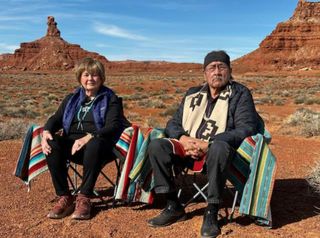On April 8, 2024, much of North America will experience a solar eclipse: a cosmic alignment of Sun, Moon, and Earth, in that order. The Moon’s shadow path will make landfall on Mexico’s Pacific coast, cross the United States from Texas to Maine, and exit North America via Newfoundland, Canada, continuing into the Atlantic Ocean.
15.02.2024
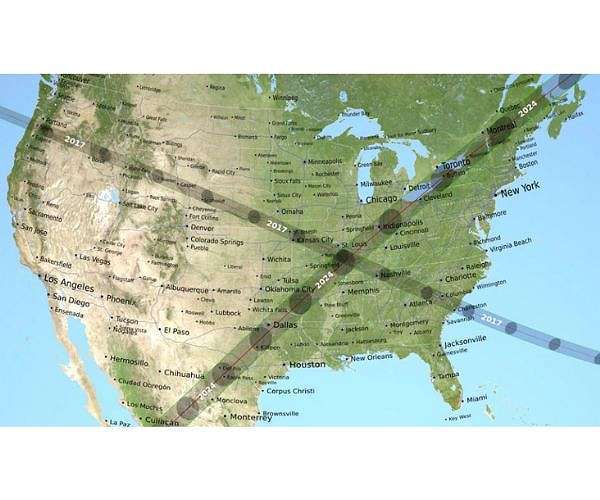
People on or near the path of totality can participate as "Data Collectors" by using an AudioMoth device, a low-cost audio recording device called equipped with a micro-SD card, to capture the sounds of an eclipse.
When darkness sweeps across the landscape during a total solar eclipse, unusual things start happening. Fooled by the false dusk, birds stop singing, crickets start chirping, and bees return to their hives.
Reports of these atypical animal behaviors date back centuries, but the effects of an eclipse on plant and animal life are not fully understood. So, on April 8, 2024, the NASA-funded Eclipse Soundscapes Project will collect the sights and sounds of a total solar eclipse with help from interested members of the public to better understand how an eclipse affects different ecosystems.
"Eclipses are often thought of as a visual event - something that you see," said Kelsey Perrett, Communications Coordinator with the Eclipse Soundscapes Project. "We want to show that eclipses can be studied in a multi-sensory manner, through sound and feeling and other forms of observation."
A total solar eclipse occurs when the Moon passes directly in front of the Sun, blocking its light from reaching parts of the planet. In areas where the Sun's light is completely blocked - known as the path of totality - it looks as if dusk has fallen, temperatures drop, and some stars become visible. These changes can trick animals into altering their usual daytime behaviors. A total solar eclipse will pass over the heads of over 30 million people in North America on April 8, 2024, providing the perfect opportunity for a large-scale citizen science project.
The Eclipse Soundscapes Project aims to replicate a similar study conducted by American scientist William M. Wheeler following a 1932 total solar eclipse that passed over the northeast reaches of Canada and the United States. The near-century-old study captured almost 500 observations from the public.
The Eclipse Soundscapes Project hopes modern tools will replicate and expand upon that study to better understand animal and insect behavior. This will be achieved through multisensory observations, such as audio recordings and written accounts of what is seen, heard, or felt during the eclipse. The project, which is particularly interested in learning about cricket behavior, aims to answer questions like do nocturnal and diurnal animals act differently or become more or less vocal during a solar eclipse?
"The more audio data and observations we have, the better we can answer these questions," Perrett said. "Contributions from participatory scientists will allow us to drill down into specific ecosystems and determine how the eclipse may have impacted each of them."
The Eclipse Soundscape project invites people to become involved with the study at all levels - from learning about eclipses online, to collecting multisensory observations and audio data, to analyzing the data - and in all locations, whether they're on the path of totality or not. The project is open to people of all backgrounds and abilities. All project roles have been designed with accessibility in mind to invite people who are blind or have low vision to participate alongside their sighted peers.
People on or near the path of totality can participate as "Data Collectors" by using an AudioMoth device, a low-cost audio recording device called equipped with a micro-SD card, to capture the sounds of an eclipse. People can also participate as "Observers" by writing down their multisensory observations and submitting them to the project website after the eclipse. Anyone with an internet connection, can participate as an "Apprentice" by learning about eclipses or as a "Data Analyst" to help analyze the audio data after the eclipse. After completing an Eclipse Soundscapes role, a downloadable certificate will be available.
"When it comes down to it, answering our science questions about how eclipses impact life on Earth depends entirely on the data that people volunteer to contribute," Perrett said. "Our participants, including our project partners and facilitators, allow us to span the entire eclipse path and collect way more data than would be possible for just one small team."
Quelle: SD
----
Update: 1.03.2024
.
NASA Invites Media, Public to Solar Eclipse Events in April
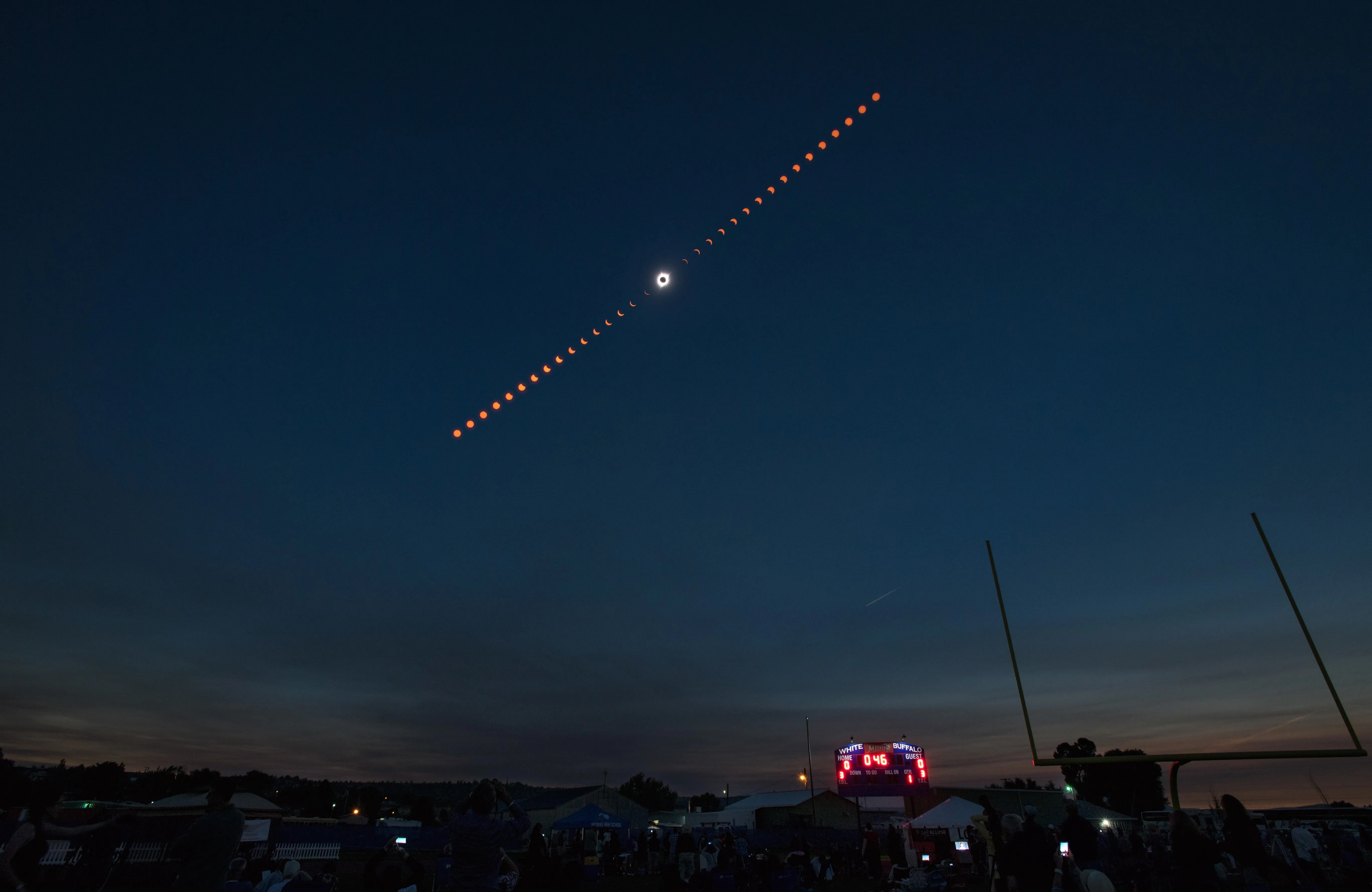
On Monday, April 8, a total solar eclipse will cross North America, giving people in 15 states the opportunity to see the Moon completely block the Sun, revealing our star’s relatively faint corona.
“This year’s total solar eclipse will be at least partially visible to all in the contiguous United States, making it the most accessible eclipse this nation has experienced in this generation,” said Nicola Fox, associate administrator, Science Mission Directorate at NASA Headquarters in Washington. “There is space for everyone to join NASA in experiencing this beautiful amalgamation of our Earth, Sun and Moon in an alignment that will not only lead to new scientific discoveries, but an incredible shared moment of inspiration and awe.”
The total solar eclipse will be visible along a narrow band stretching from Texas to Maine in the United States. Outside of this path, people in all 48 contiguous U.S. states will have the opportunity to see a partial eclipse, when the Moon covers only part of the Sun. Learn how to safely view this celestial event on NASA’s eclipse website.
NASA is joining with organizations, local governments, universities, science centers, and more for in-person events to engage the public and share the excitement of the solar eclipse. Information about these and additional events is available on NASA’s eclipse website.
To request a remote or in-person eclipse interview with NASA, please contact agency-eclipsemedia@mail.nasa.gov.
Location details and information for public and media attendance for select events is below:
Waco, Texas: STEAMclipse festival on April 6
- For the public: The festival is open to the public, with no registration required.
- For media: Contact Taryn Courville (taryn.courville@esc12.net) for access information.
Events on April 8:
Kerrville, Texas: Kerrville Eclipse Festival at Louise Hays Park
- For the public: Space in the event cannot be reserved and you will not need a ticket to enter. Limited off-site parking will be available to reserve ahead of the eclipse. Details are available online.
- For media: Request access online by Thursday, March 28.
Stonewall, Texas: Eclipse viewing at LBJ National Historical Park
- For the public: The event is free and open to the public. No registration is required, but attendance is limited to the first 1,000 cars on April 8. More information is available online.
- For the media: Contact Cynthia Dorminey (cynthia_dorminey@nps.gov) for access information.
Austin, Texas: Eclipse viewing at the Austin Central Library
- For the public: 10 a.m. – 2:30 p.m. on April 8, with free public talks, children’s activities, and a solar telescope.
- For media: Contact Ian O’Neill (ian.j.oneill@jpl.nasa.gov) for access information.
Waco, Texas: Eclipse Over Texas: Live From Waco!
- For the public: Tickets required.
- For the media: Media can request access online.
Dallas: Eclipse viewing at the Dallas Arboretum
- For the public: Admission tickets are sold out. More information is available online.
- For the media: Contact Terry Lendecker (tlendecker@dallasarboretum.org) for access information; space is limited.
Sun, Moon, and You at the Dallas Cotton Bowl
- For the public: Free tickets required, check back online for more details.
- For media: Contact John Leslie (john.leslie@noaa.gov) for access information.
Russellville, Ark.: Eclipse events in multiple locations
- For the public: Many events are free with no registration required; some events require tickets with details available online.
- For media: Contact Christie Graham (cgraham@discoverrussellville.org) for access information.
Carbondale, Ill.: Southern Illinois Crossroads Eclipse Festival
- For the public: Tickets are required; information is available online.
- For media: Contact Tim Crosby (crosby@siu.edu) for access information.
Indianapolis: Eclipse viewing at Indianapolis Motor Speedway
- For the public: Tickets are required for guests over 18; information is available online.
- For media: Contact mediacreds@brickyard.com for credentials by Wednesday, March 27.
Cleveland: Total Eclipse Fest at the Great Lakes Science Center
- For the public: Event is free and open to the public with no registration required; information is available online.
- For media: Contact Joe Yachanin (yachaninj@glsc.org), marketing and communications director, Great Lakes Science Center, for access information.
Erie, Pa.: Eclipse viewing at Mercyhurst University
- For the public: Event is free and open to the public with no registration required; information is available online.
- For media: Contact Christine Temple (cvb1@visiterie.com) for access information.
Niagara Falls, N.Y.: Eclipse events in multiple locations
- For the public: Many events are free and open to the public, and registration may be required based on space constraints. Information is available online.
- For media: Contact Angela Berti (Angela.Berti@parks.ny.gov) for Niagara Falls State Park access information and Sarah Harvey (sharvey@niagarafallsusa.com) for access information on other events.
Houlton, Maine: Eclipse events in multiple locations
- For the public: Eclipse viewing in downtown Houlton on April 8 is free and open to the public.
- For media: Contact Darcy Elburn (darcy.e.elburn@nasa.gov) for access information.
Washington: Solar Eclipse Festival on the National Mall
- For the public: Event is free and open to the public with no registration required; information is available online.
- For media: Contact Amy Stamm (StammA@si.edu) for access information.
NASA will host live coverage of the eclipse on NASA+, the agency’s website, and the NASA app from 1 to4 p.m. EDT on April 8. NASA also will stream the broadcast live on its Facebook, X, YouTube, and Twitch social media accounts, as well as a telescope-only feed of eclipse views on the NASA TV media channel and YouTube.
Quelle: NASA
----
Update: 13.03.2024
.
Total Solar Eclipse 2024: The Moon’s Moment in the Sun
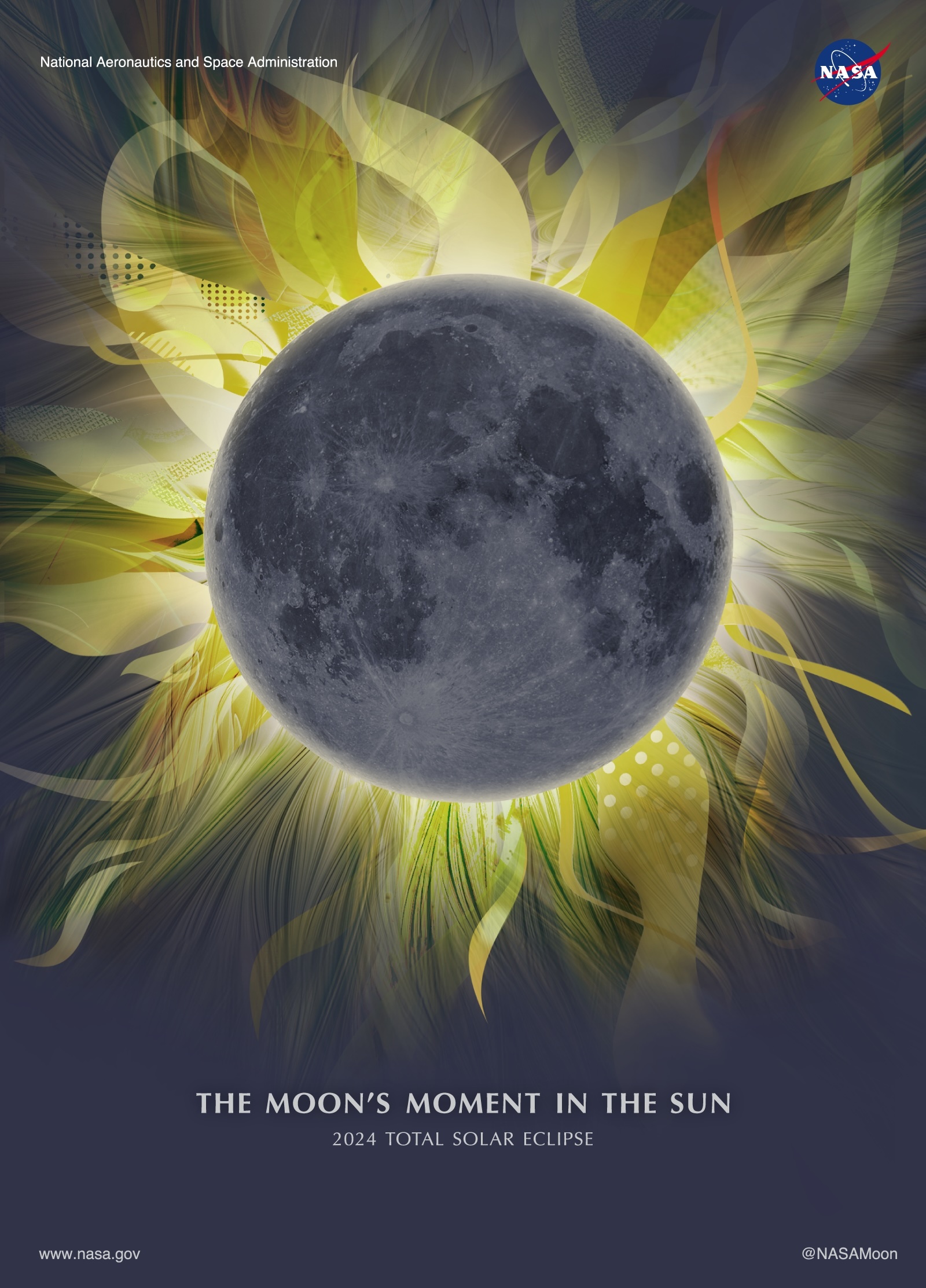
It's All About Perspective
Solar eclipses on Earth are a convenient coincidence. The Sun’s diameter is about 400 times larger than the Moon’s, and the Sun is almost 400 times farther away from us than the Moon is. This combination makes the Sun and Moon appear nearly the same size in our sky, setting up a spectacular show when they align. Try experimenting with apparent size for yourself by holding up a small item, like your thumb, and moving it closer and farther away to block different-sized objects from your view.
The Moon’s distance from Earth varies, though only slightly. The Moon’s orbit is not a perfect circle, and it is not quite centered on our planet. At its closest, the Moon is about twenty-eight Earth diameters away; at its farthest, about thirty-two. As a result, the Moon’s apparent size changes over time, and eclipses are not all alike.
A total solar eclipse is only possible when the Moon is closer to Earth than average. When the Moon is farther away, its apparent size is smaller than the Sun’s, so it does not completely block the Sun’s bright disk. In this configuration, when the Moon passes between Earth and the Sun, a “ring of fire” remains visible – that’s an annular solar eclipse.
Ever wonder why solar eclipses don’t happen more often? Earth, Moon, and Sun don’t line up perfectly every month because the Moon’s orbit is tilted by about 5 degrees compared to Earth’s orbit around the Sun. Most of the time, the Moon’s shadow misses our planet.
When all three celestial bodies do align, views of the eclipse depend not just on our position in the solar system, but also on our location on Earth. The Moon’s shadow has two parts, the umbra and the penumbra. Observers in the umbra (or “path of totality”) will experience a total solar eclipse. For those in the penumbra, the eclipse will be partial.
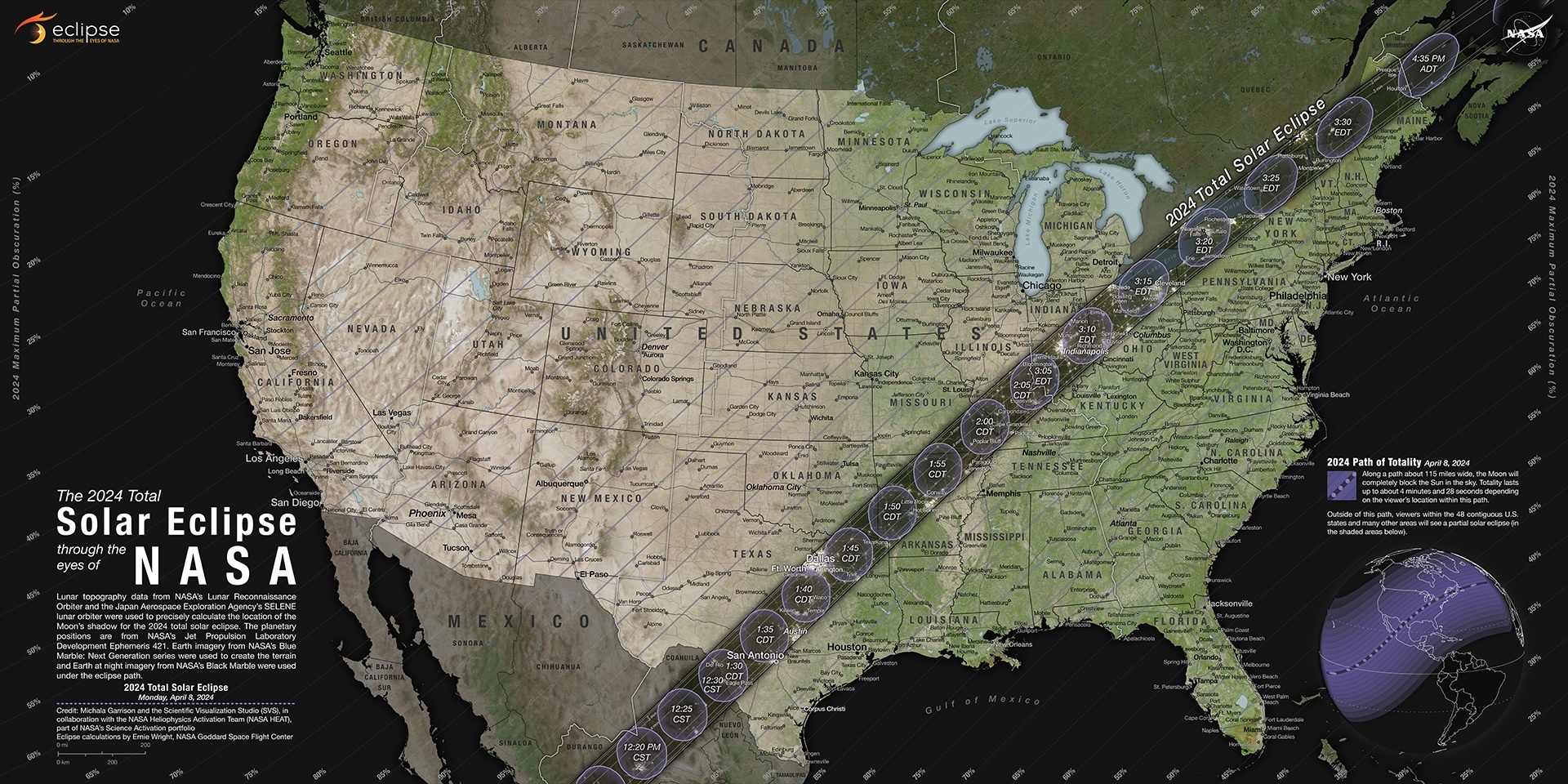
If you are planning to observe the eclipse, you’ve probably consulted a shadow path map like this one. But how do we know exactly where and when the Moon will cast its shadow? Eclipse prediction depends, first and foremost, on understanding the positions and movements of the Moon, Sun, and Earth. Modern maps build on a long human history of eclipse forecasting. And since 2009, NASA’s Lunar Reconnaissance Orbiter (LRO) has been mapping the Moon in unprecedented detail. LRO’s lunar topography data enables us to make more accurate eclipse predictions than ever before.
Moonshadow: The Making of a Map
The Moon is a rugged world of peaks, craters, basins, and valleys. Since the lunar horizon is bumpy and jagged, the shadow it casts is not quite round. Knowing the precise shape of the Moon helps us understand exactly where its shadow will darken Earth’s surface. Of course, our own planet is not perfectly round, either. Today’s eclipse maps account not only for the lunar landscape, but also for the contours of Earth’s mountain ranges, lowlands, and other features.
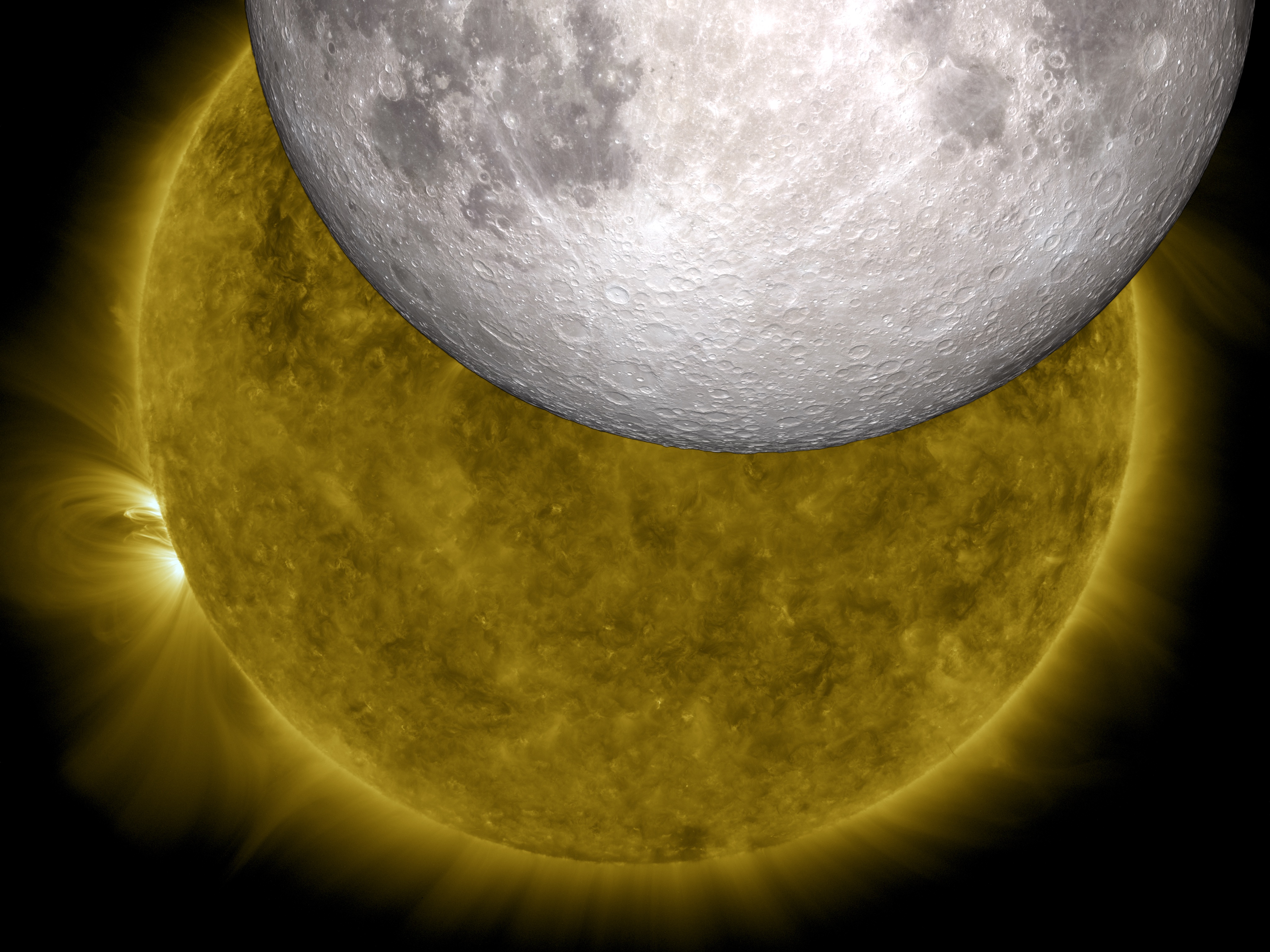
Bursts of Light: Baily's Beads and the Diamond Ring Effect
Casual observers don’t usually notice that the Moon’s silhouette is rough around the edges. At a distance of 239,000 miles (that’s the average gap between Earth and the Moon), our nearest neighbor in space looks round – even mountains appear too small for the human eye to distinguish. But, for two brief moments during a solar eclipse, craggy lunar terrain commands the spotlight.
On the brink of totality, as the Moon moves into full Sun-blocking position, the Sun’s edge doesn’t go dark all at once. Last rays of sunlight peek through valleys on the lunar horizon. These isolated areas of intense brightness can resemble a string of glowing beads or a single dramatic burst of light like the gem on a ring. The same phenomena, sometimes called Baily’s Beads and the Diamond Ring Effect, can also occur as the Moon edges out of totality (or annularity). Since we know the shape and position of the Moon so well, we can predict where the first and last bits of sunlight will appear.
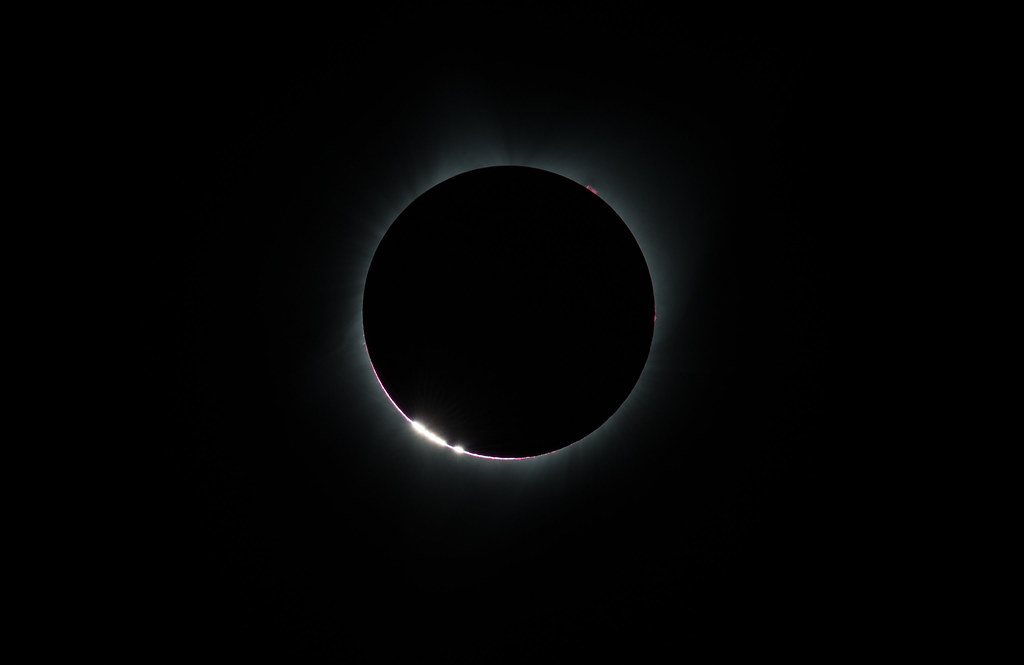
NASA Eclipse Science and You
NASA scientists take full advantage of the unusual atmospheric and environmental conditionsthe Moon’s passing shadow creates, and you can too. Here are just a few places to start.
- Join a community eclipse science project like Eclipse Soundscapes or GLOBE Eclipse.
- A solar eclipse is a rare opportunity to directly observe a new moon. Document your experience and kick off a month of Moon observations with our special edition Moon Observation Journal.
- Learn more about lunar and solar eclipses.
- Connect with observers around the world and keep celebrating the Moon’s place in science and culture on the next International Observe the Moon Night, Sept. 14, 2024.
Total solar eclipse to sweep across Mexico, the US and Canada
The moon will pass directly in front of the sun, exposing ghostly traces of the sun’s atmosphere
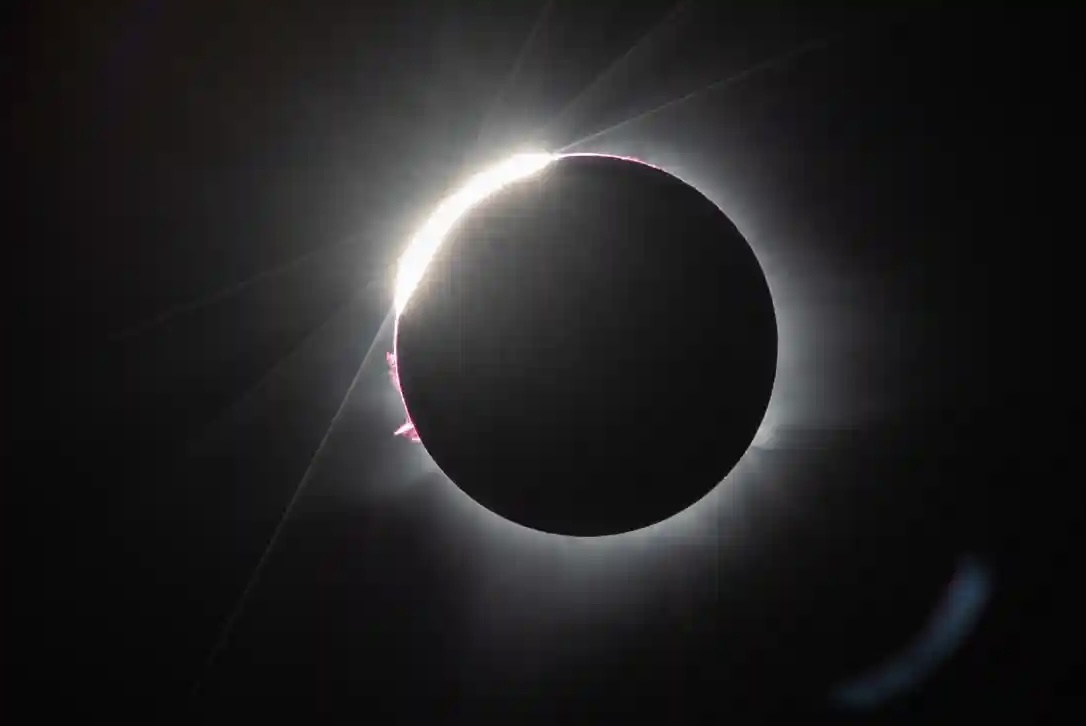
A total solar eclipse. Observers on the western coasts of Ireland and Scotland will see a partial solar eclipse. Photograph: Scott Bauer/The Guardian
A total solar eclipse will sweep across the Pacific Ocean, through Mexico, the US and Canada and end over the Atlantic Ocean on 8 April.
The phenomenon occurs when the moon passes directly in front of the sun, blocking out the bright surface and revealing the ghostly traces of the sun’s atmosphere.
The alignment has to be precise, and this gives rise to a narrow track of totality from which the total eclipse can be seen.
This month the track will be roughly 71 miles (115km) across. Outside the track, a partial eclipse can be seen but the further from the track of totality, the smaller the portion of the sun that will be obscured.
Observers on the western coasts of Ireland and Scotland will be able to glimpse the partial solar eclipse, as the sun is setting that evening.
The total eclipse will be visible in Mexico between 10.51 MDT and 12.32 CST; in the US between 13.27 CDT and 15.35 EDT; and in Canada between 15.12 EDT and 17.16 NDT.
Searching online for “eclipse track 8 April 2024” will bring up maps and information.
The next solar eclipse visible from London will be a partial eclipse on 29 March 2025.
Quelle: The Guardian
+++
'Everything is interrelated.' For the Navajo Nation, the April 8 solar eclipse is a spiritual experience
Nancy Maryboy (left) and David Begay at the Valley of the Gods, Utah for the Oct. 14, 2023 annular eclipse. (Image credit: Isabel Hawkins)
According to the Navajo (Diné) beliefs, instead of waiting for totality to occur and then cheering loudly and celebrating, the entire experience has a more serious tone and strong reverence. For the Navajo, an eclipse is deeply rooted in the respect of the cosmos, and it serves as an event of renewal and contemplation with guidance passed along from generations before.
"Our elders tell us that the sun, the moon and the Earth go through constant renewal by aligning themselves," Dr. David Begay, a Navajo astronomer, explained in the same release.
"It's one of the natural laws that's been observed over the years and the sun rebalances itself with the alignment. Over the years, people must have experienced that looking at the sun directly during an eclipse can hurt your eye, damage your eye, so it's a restriction. When there's an eclipse, they tell people, 'Go inside.' Respect the cycle and let time pass."
But deciding how to watch and experience an eclipse comes down to the individual, and for those deciding to venture outside, there's an option for a more modern approach. While many adhere to original rituals and traditions, the development of safety viewing glasses for those in the path of totality in more recent times has allowed families to have another option while taking part in the tradition.
"It's all about being reverent to what's going on, being very quiet. Traditionally people would be inside and they wouldn't drink anything or eat anything," Maryboy said.
"But they would either do that during just the totality or for the entire eclipse and it all depends on your family yourself, your community with what you're going to follow. Today, people do go out and they do look at the eclipse in many instances, but we have glasses now that protect your eyes, which we've never had way back hundreds of years ago when these protocols were laid down."
No matter what each individual decides, at the end of the day, those within the Navajo (Diné) community hope that for the upcoming solar eclipse and the many more to come there can be a better understanding by other cultures of their beliefs and how special these cycles are.
"We think of it as something that fits into a Navajo story and provides rules for living. Living in harmony with that cosmic order, living your life on Earth," Maryboy said. "I would like to see people realize how complex and beautiful Navajo astronomy is and how people live by it. It's not just something that you go out and jump up and down, shriek and get so excited … it's more like expressing you're all about it. You're seeing a once-in-a-lifetime event and you want to give it the honor and respect it deserves."
To learn even more about Navajo astronomy and their knowledge of the cosmos, check out these informational videos from the Exploratorium.
Quelle: SC
----
Update: 3.04.2024
.
New ‘Eclipse Watch’ Tool Shows Eclipses from Space Any Time
Do you wish you could see a total solar eclipse every day? With a new online tool called Eclipse Watch, you can observe the Sun’s outer atmosphere, or corona, in real time with eclipse-like images from space as we count down to the next total solar eclipse on Earth.
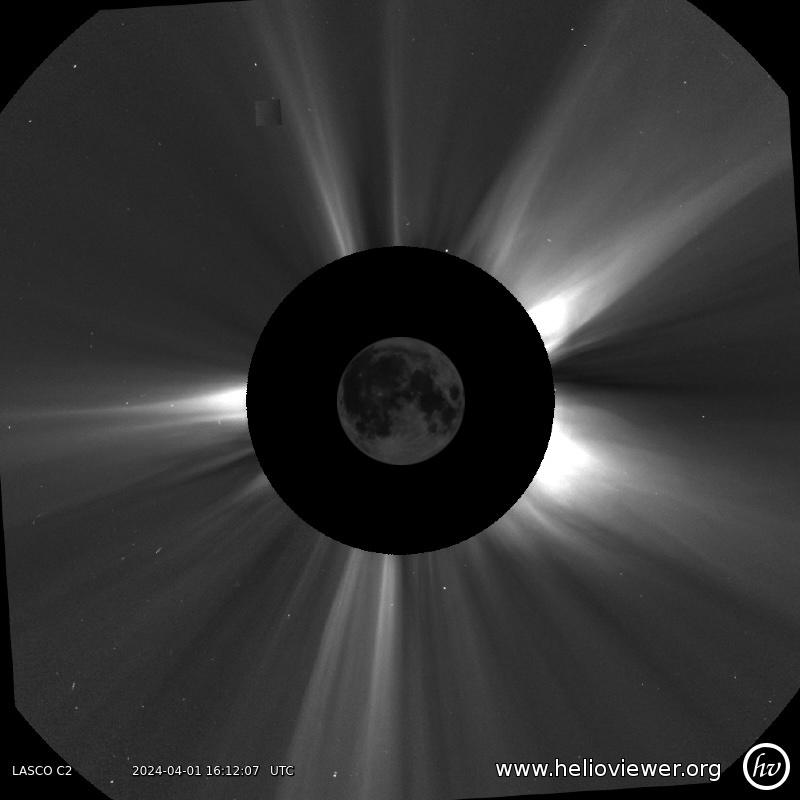
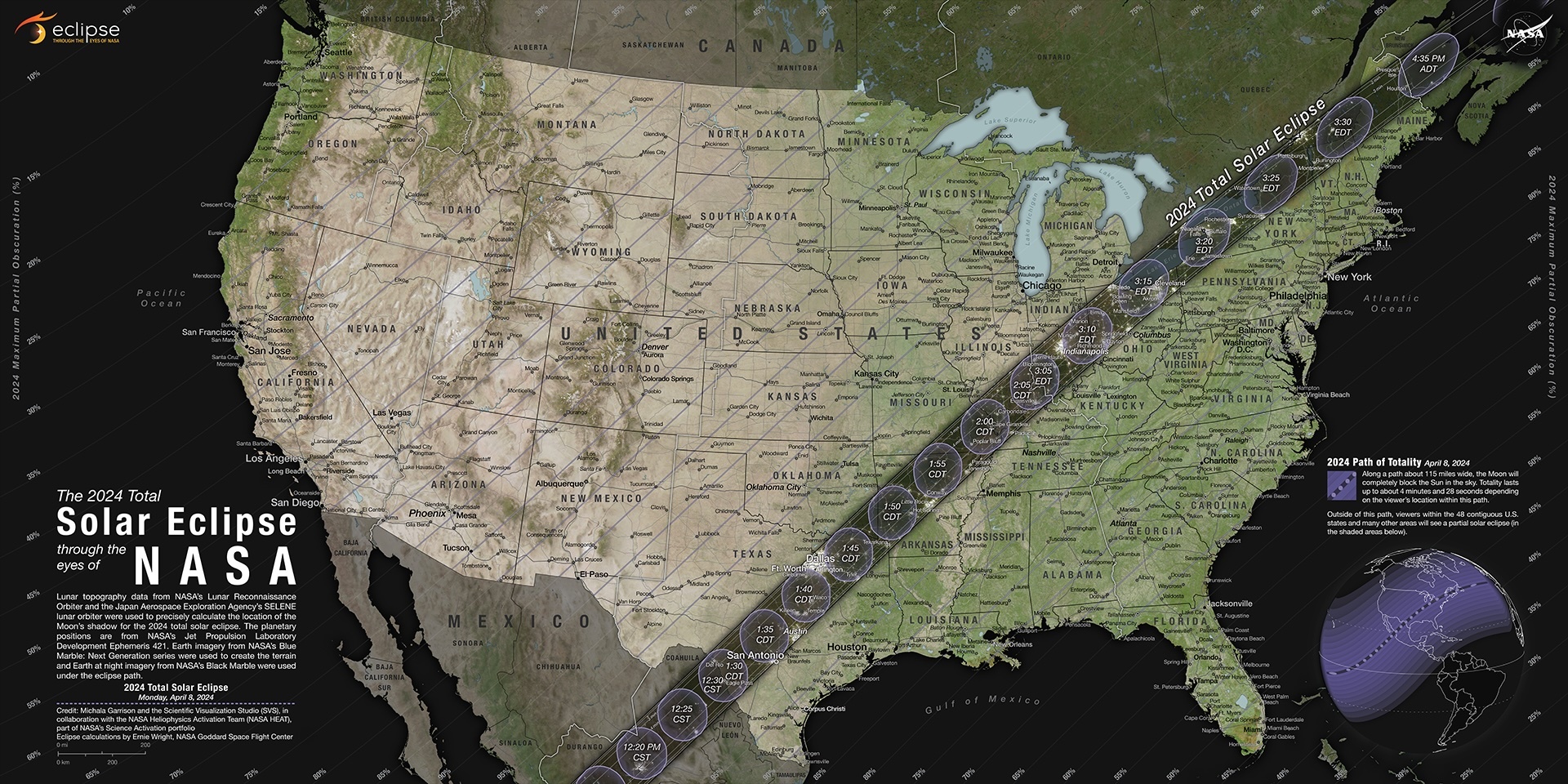
A total solar eclipse occurs when the Moon passes between the Sun and Earth, completely blocking the face of the Sun. This celestial event reveals the extended atmosphere of the Sun, which is normally obscured from view by bright sunlight. Hot gas streaming from the surface of the Sun into interplanetary space can be observed during this time.
To study the Sun's extended atmosphere when a total solar eclipse isn't happening, scientists can use special telescopes called coronagraphs. These instruments create an artificial eclipse by using a round disk to block out the light from the Sun (the same way the Moon does during an eclipse) and reveal parts of the Sun’s atmosphere that are normally too dim to see.
The Helioviewer Eclipse Watch provides eclipse-like images that are captured over a hundred times each day by the Large Angle and Spectrometric Coronagraph Experiment (LASCO) instrument on the SOHO spacecraft. LASCO observes the Sun’s corona and can identify clouds of material called coronal mass ejections that erupt from the Sun. These images offer a glimpse of what you could witness during the historic celestial event on April 8. LASCO’s disk obscures a larger area than the Moon will block during the total solar eclipse, as indicated by the black circular area in the Eclipse Watch tool. A picture of the Moon is overlaid on the image for scale. This means that during the total eclipse on Earth you will get to see even more of the Sun’s extended atmosphere than LASCO captures.
SOHO launched in 1995 to study our star, from the Sun's deep core to its outer corona. LASCO is one of 12 instruments on SOHO used to study different solar regions and a constant stream of particles and energy from the Sun called the solar wind. Thousands of comets that pass close to the Sun – called sungrazing comets – have also been discovered in SOHO images.
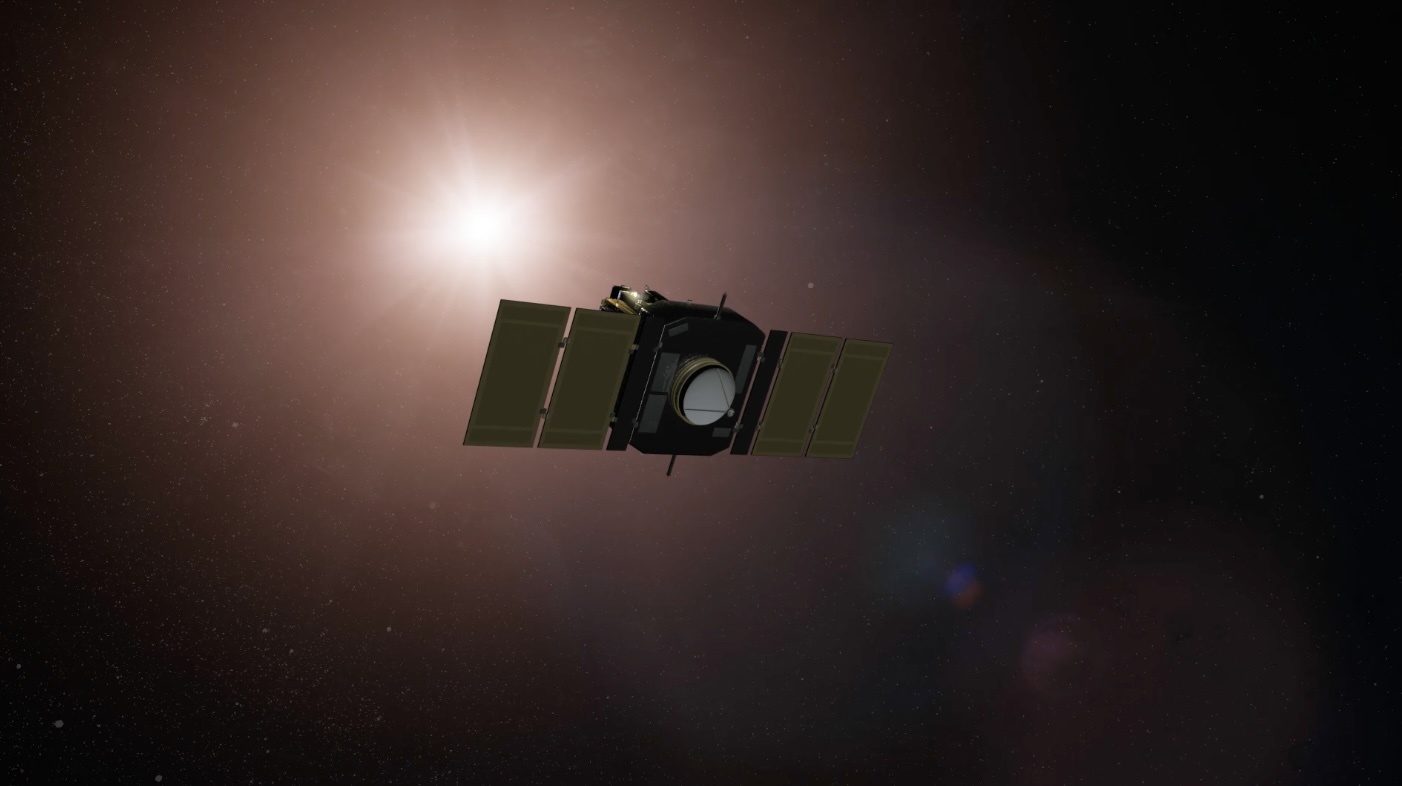
Countdown to the Eclipse
The total solar eclipse on April 8, 2024, will pass over Mexico, the United States, and Canada. The path of totality in the U.S. stretches from Texas to Maine.
A countdown timer displayed on the Eclipse Watch page indicates when the eclipse will begin in North America on April 8.
If you are inside the path of totality, your views of the eclipse may be similar, or even better, than what LASCO captures every day. Remember to use specialized eye protection for solar viewing except during the brief total phase of a total solar eclipse, when the Moon completely blocks the Sun.
For more information about eclipses, visit go.nasa.gov/Eclipse2024.
Helioviewer
Eclipse Watch is an extension of Helioviewer – a free and open-source visualization tool supported by NASA’s Solar Data Analysis Center. It’s like using your favorite map app for the Sun! Users select spacecraft instruments and create their own movies of solar phenomena. This tool supports exploratory data analysis and enables researchers to discover, pinpoint, and monitor solar events. A downloadable version called JHelioviewer with 3D movie capability is also available.
Safety First!
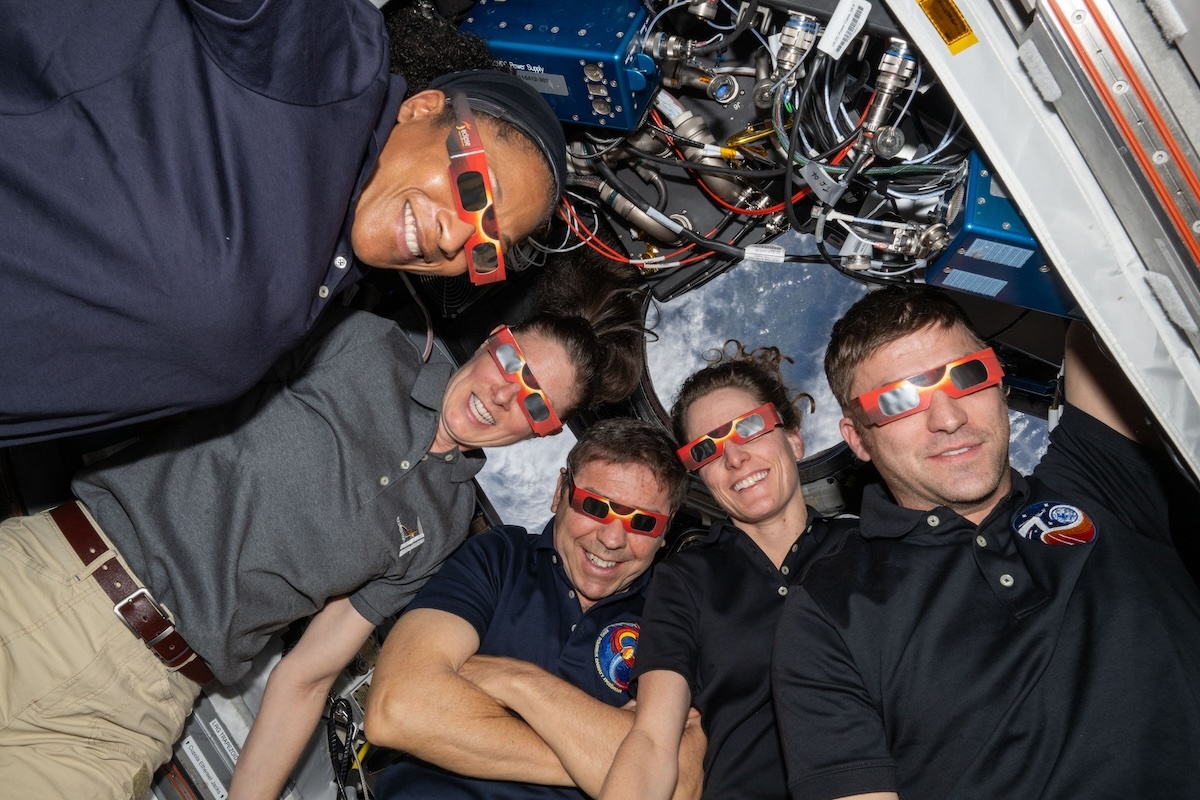
NASA astronauts aboard the International Space Station wear eclipse glasses in this image from March 26, 2024. While millions of people on Earth experience the total solar eclipse on April 8, 2024, the space station crew will have the opportunity to see it from 250 miles above our planet. Except during the brief period when the Moon completely blocks the Sun’s bright face, it is not safe to look directly at the Sun without specialized eye protection for solar viewing. On Earth, you must look through safe solar viewing glasses (“eclipse glasses”) with the ISO 12312-2 international standard or a safe handheld solar viewer at all times. If the crew has the opportunity to directly image the eclipse through space station windows, they will use a handheld camera equipped with a solar filter and will not look at the Sun directly.
Based on current orbital position and ground track predictions for the International Space Station, astronauts aboard the orbiting laboratory will have three opportunities to view the ground shadow (penumbra and umbra) of the Moon as it tracks across the Earth surface during the total solar eclipse. After encountering the eclipse shadow above the Pacific Ocean, then during a pass from the New Zealand area to California and Idaho, the space station is predicted to encounter the eclipse during a time of near-to-full totality while over Maine and New Brunswick around 3:30 p.m. EDT.
For those who won’t be in the path of totality or on the space station, NASA will have live coverage of the eclipse.
Image Credit: NASA/Loral O’Hara
Quelle: NASA


